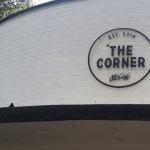Oxford Campus Stores: An example for how authenticity is marketed in Oxford
In this week’s essay I explored how authenticity is marketed in Oxford. As an example, I took the Oxford Campus Stores on Broad Street, a small shop that offers merchandise and souvenirs related to the University of Oxford, such as hoodies and sweatpants.
My thoughts are mainly based on Cavanaugh and Shankar’s (2014) article, in which the authors address the question “how capitalist producers use regional identities and aspects of heritage to construct and market cultural productions they hope will be construed as ‘authentic’ in regional and global markets” (p. 52) They conclude: “[the production of authenticity] is contemporary and traditional, constructed via material as well as linguistic means” (p. 61).
Addressing the question how authenticity is produced at the Oxford Campus Stores, it appears sensible to distinguish between the store and the products. On the one hand, the store gives the impression of authenticity through its wooden front painted in Oxford-blue, looking very much “traditionally British“. It also states “Official Stockist of the University of Oxford Collection“ right above the entrance door. On the other hand, the products are “made Oxford“ through a print that either states the University’s name or shows one of its logos. “Oxford” as a brand marketed to tourists thus refers directly to the University and may be described as a “chronotype“ [see Cavanaugh and Shankar (2014), based on Bakhtin (1981)], connecting discrete parts of the history of the institution (namely the moments that are famously known) to the present.
In this regard, the Oxford print on the products seems to have a symbolic value for the customers in that it acts as a reference to and symbol for the history and thus built reputation for academic excellence and appearance as an exclusive institution. This may be described as a form of “linguistic materiality“ [see Cavanaugh and Shankar (2014)] of the term “Oxford“. The idea for the customer might be that through buying one of the licensed objects in Oxford, one could somehow become a member of what may be perceived as an “elite-club” (or simply show that one has been to the special place).
I conclude, Oxford, from an abstract point of view actually not more than a (beautiful) British town, becomes objectified and commodified. It becomes a brand whose identity is based on the University’s famous history and reputation. This is symbolically represented by the term “Oxford” (respectively “Oxford University”) and the University’s logos, which – printed on objects – add an intangible “extra” value to these, thus increasing their economic value.
An interesting point for discussion would be, however, if too extensive marketing of authenticity leads to a decline of authenticity and thus potentially also of the “extra” value.
Contributed by VincentJanssen on 16/02/2015







